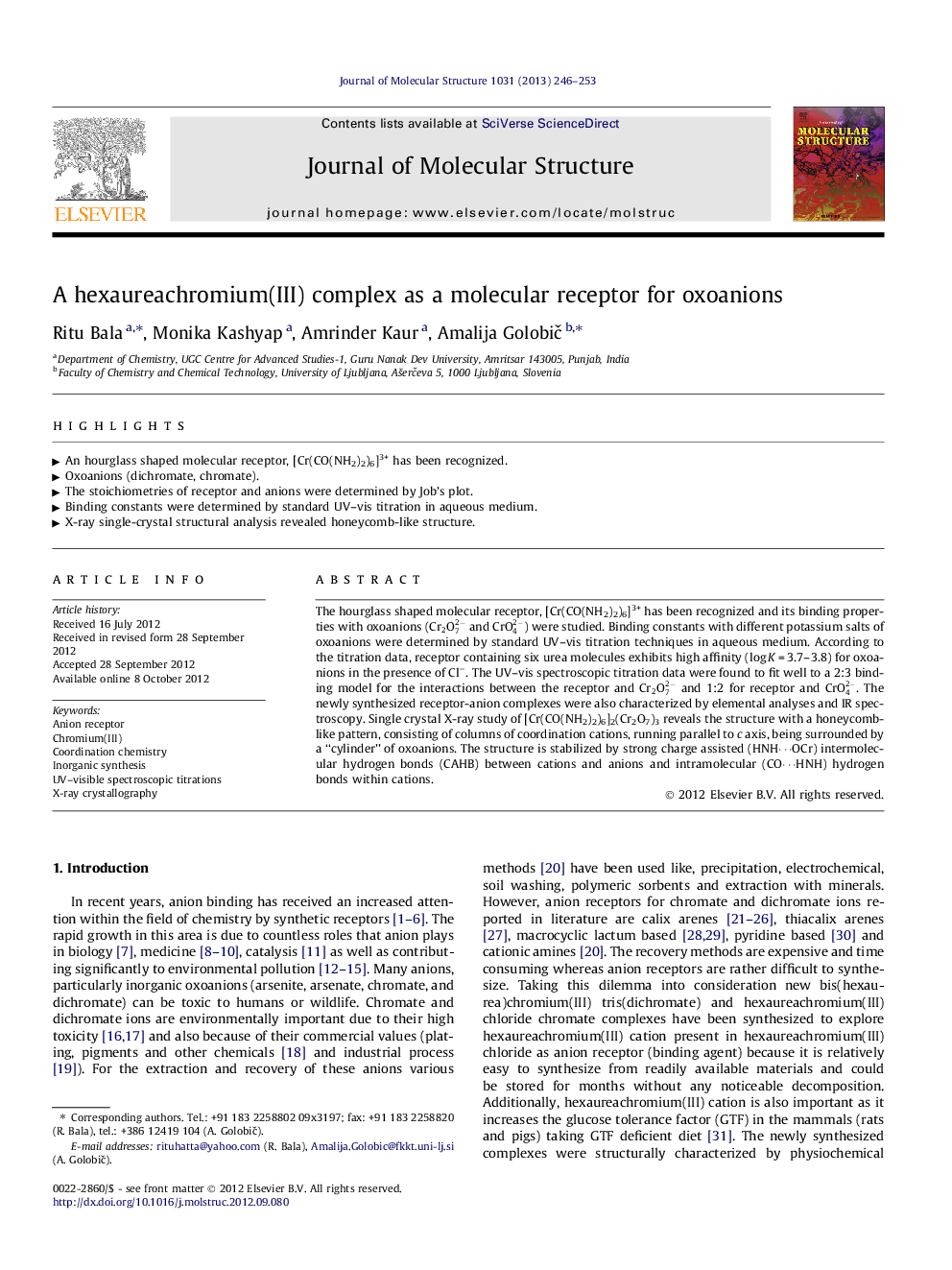| کد مقاله | کد نشریه | سال انتشار | مقاله انگلیسی | نسخه تمام متن |
|---|---|---|---|---|
| 1409474 | 1501783 | 2013 | 8 صفحه PDF | دانلود رایگان |

The hourglass shaped molecular receptor, [Cr(CO(NH2)2)6]3+ has been recognized and its binding properties with oxoanions (Cr2O72- and CrO42-) were studied. Binding constants with different potassium salts of oxoanions were determined by standard UV–vis titration techniques in aqueous medium. According to the titration data, receptor containing six urea molecules exhibits high affinity (log K = 3.7–3.8) for oxoanions in the presence of Cl−. The UV–vis spectroscopic titration data were found to fit well to a 2:3 binding model for the interactions between the receptor and Cr2O72- and 1:2 for receptor and CrO42-. The newly synthesized receptor-anion complexes were also characterized by elemental analyses and IR spectroscopy. Single crystal X-ray study of [Cr(CO(NH2)2)6]2(Cr2O7)3 reveals the structure with a honeycomb-like pattern, consisting of columns of coordination cations, running parallel to c axis, being surrounded by a “cylinder” of oxoanions. The structure is stabilized by strong charge assisted (HNH⋯OCr) intermolecular hydrogen bonds (CAHB) between cations and anions and intramolecular (CO⋯HNH) hydrogen bonds within cations.
► An hourglass shaped molecular receptor, [Cr(CO(NH2)2)6]3+ has been recognized.
► Oxoanions (dichromate, chromate).
► The stoichiometries of receptor and anions were determined by Job’s plot.
► Binding constants were determined by standard UV–vis titration in aqueous medium.
► X-ray single-crystal structural analysis revealed honeycomb-like structure.
Journal: Journal of Molecular Structure - Volume 1031, 16 January 2013, Pages 246–253